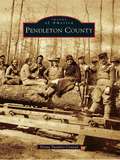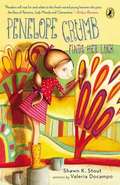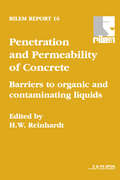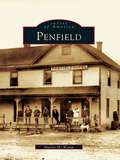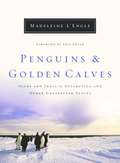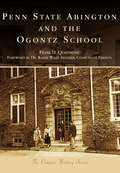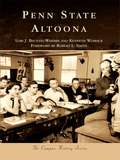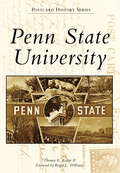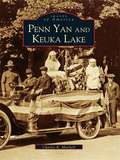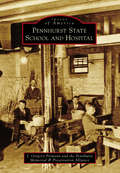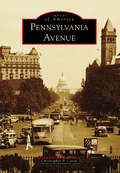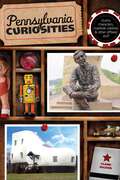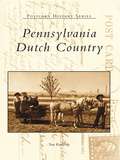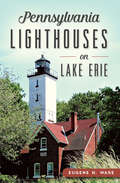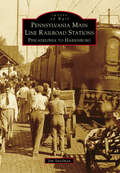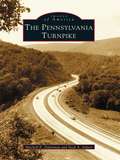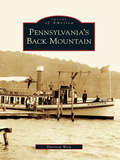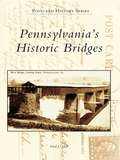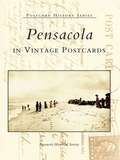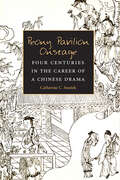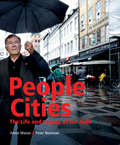- Table View
- List View
Pendleton County (Images of America)
by Penny Tuemler ConradPendleton County, carved from parts of Bracken and Campbell Counties in 1798, sits halfway between Cincinnati, Ohio, and Lexington, Kentucky. The Pendleton name came from the early group of Virginia settlers who founded Falmouth, the county seat, at the confluence of the Licking Rivers. They selected this name to honor Edmund Pendleton, a Virginia statesman and surveyor of Kentucky. The landscape offered gently rolling hills, the two Licking Rivers, and their tributaries as a place to settle and prosper. Within the valleys and rich bottomlands of these hills, the communities of Falmouth, Butler, DeMossville, Catawba, Goforth, McKinneysburg, Boston Station, Morgan, Flour Creek, Mt. Auburn, and all the small business centers grew and prospered. Pendleton County has provided their community, state, and country with citizens who served as legislators, ministers, soldiers, education leaders, entertainers, business entrepreneurs, and a Nobel Prize-winning scientist.
Penelope Crumb Finds Her Luck
by Valeria Docampo Shawn Stout"Kids who have outgrown the Junie B. Jones series will enjoy Penelope's equally comical narrative style." --BCCB In the third book in this hilarious, endearing series, all Penelope Crumb wants is to be someone's "Favorite." She'd thought she was her Grandpa Felix's Favorite, and her mom's Favorite, and her friend Patsy Cline's Favorite, but she's starting to realize that maybe she's not. And it's all The Bad Luck's fault. So since Penelope's a superb artist, she comes up with a plan--she's going to be the boss of the mural her school is making at the Portwaller's Blessed Home for the Aged, which will make her into everyone's Favorite. And maybe it'll frighten The Bad Luck away. But things don't quite go as planned there either. And when an old woman named Nila promises to help Penelope find her luck so everyone will like her again, things get even worse! In the end, Penelope finds out that friendships aren't about luck--and that it doesn't matter if you're anyone's Favorite when there are tons of people who love you. In a book that's equal parts humor and heart, it's clear to see why young readers will count Penelope as one of their Favorites. Look Who Loves Penelope Crumb! [STAR] "Penelope Crumb . . . channels the quirkiness of Ramona Quimby and the detective skills of Cam Jansen . . . Penelope will delight children and parents alike."--Shelf Awareness "Penelope is an intrepid heroine with a unique and frequently amusing narrative voice . . . kids who have outgrown the Junie B. Jones series will enjoy Penelope's equally comical narrative style."--The Bulletin of the Center for Children's Books "Readers will root for and relate to this fresh-voiced young heroine who joins the likes of Ramona, Judy Moody and Clementine."--Kirkus Reviews
Penelope Crumb is Mad at the Moon
by Shawn StoutPenelope Crumb is not having a very good week. First she accidentally comes to school dressed as an elephant (dress like an animal day is next week), and then in gym class she's forced to square dance. With a boy who is known as Lippy Gordon because of how sweaty his lip is. All the time. Penelope is mortified. And then is extra mortified when she discovers that Lippy doesn't want to dance with her either! When Grandpa tells Penelope that he sings to the moon when he's having trouble, Penelope grabs onto this plan. But sometimes you need more than the moon to fix things. Another sweet and funny Penelope book. Equal parts humor and heart, this is a character not to be missed. Perfect for fans of Ramona Quimby, Judy Moody and Clementine, and for fans who have just outgrown Junie B. Jones and Katie Kazoo.
Penetration and Permeability of Concrete: Barriers to organic and contaminating liquids
by H. W. ReinhardtThis book is an investigation into the barrier qualities of concrete. The transport of fluids, in particular organic and contaminating liquids, through concrete can lead to water and soil pollution. This is a world-wide problem on which there is little published material. This state-of-the-art report redresses the balance and sets out current knowl
Penfield
by Martin M. WampPenfield began as a milling town in the early 1800s, evolved into a farming community by the 1850s, and grew into one of Rochester's finest suburbs in the 1900s. Within the pages of Penfield are stories of founder Daniel Penfield and why, as a successful merchant and landowner, he left eastern New York to settle in an uninhabited wilderness; of twelve-year-old "Little Nellie" Williams, who operated the town's newspaper during the Civil War; of Almon Strowger, the inventor of the dial telephone switch; and of Timothy and Lydia Bush, direct ancestors of President George W. Bush. One of the only remaining mud houses in New York State still stands in Penfield; it and many other early structures are listed on the National Register of Historic Places.
Penguin Planet: Their World, Our World
by Kevin SchaferPenguin Planet is a celebration of all things penguin. Author and photographer Kevin Schafer made it his mission to see and photograph every remaining penguin species in the wild, and the first edition was the result of that journey. This new edition combines even more exceptional photography with colorful personal essays and up-to-date information on a most remarkable and utterly unique group of birds. In this extraordinary collection, Schafer not only discusses how penguins live but also captures them on camera, while dispelling many popular misconceptions. (Did you know that most penguin species never encounter ice and snow in their lifetimes?) In addition, Schafer examines important and timely topics, including the effects of global climate change and how these unlikely birds are faring in an increasingly human-altered world. Penguin Planet is a necessity for penguin lovers everywhere.
Penguins and Golden Calves
by Madeleine L'EngleDespite protests and warnings from friends and family, author Madeleine L’Engle, at the age of seventy-four, embarked on a rafting trip to Antarctica. Her journey through the startling beauty of the continent led her to write Penguins and Golden Calves, a captivating discussion of how opening oneself up to icons, or everyday “windows to God,” leads to the development of a rich and deeply spiritual faith. Here, L’Engle explains how ordinary things such as family, words, the Bible, heaven, and even penguins can become such windows. She also shows how such a window becomes an idol–a penguin becomes a “golden calf”–when we see it as a reflection of itself instead of God. With delightful language, insightful metaphor, and personal stories, L’Engle brings readers to a deeper understanding of themselves, their faith, and the presence of God in their daily lives.
Penguins!: Photographs And Facts From One Man's Search For The Penguins Of The World (Step into Reading)
by David SalomonPenguin lovers and young nonfiction fans will enjoy following one penguin couple through their efforts to raise a family of chicks in this engaging Step into Reading Science Reader.Did you know that penguins have feathers but don&’t fly? Or that their eggs are guarded by the daddy penguin? Or that they dive in the ocean for their food? Discover these facts and more, along with brilliant photographs of chinstrap penguins in Antarctica, in this captivating nonfiction leveled reader. These unusual birds will waddle into children&’s hearts while they decode the simple text. Great for confident or reluctant readers. Step 2 Readers use basic vocabulary and short sentences to tell simple stories. For children who recognize familiar words and can sound out new words with help.&“The Step into Reading series makes integrating reading into the curriculum so much easier. The nonfiction titles are perfect for teaching reading and language arts skills, while covering science and social studies content simultaneously!&” —Lisa Laake, second-grade Language Arts teacher
Penn State Abington and the Ogontz School (Campus History)
by Frank D. Quattrone Chancellor Emerita Dr Karen SandlerAnyone traversing the hilly, tree-lined paths of Penn State Abington would be hard-pressed to imagine the college in its first incarnation. Among the most diverse of Penn State University�s commonwealth campuses today, the college�s lineage dates to 1850 as the Chestnut Street Female Seminary in Philadelphia. This pictorial history traces its evolution from a private finishing school for affluent girls to an affordable public college that draws students from 17 states and 29 countries. Among the celebrated figures who contributed handsomely to the school�s prestige and growth are Civil War financier Jay Cooke, who transformed his suburban Ogontz mansion into the renamed Ogontz School for Young Ladies; Abby A. Sutherland, the school�s most influential principal/president, who astutely moved the school to a handsome tract of land in Abington Township, which she donated to Penn State University in 1950; and famed aviator Amelia Earhart. In the past two decades, under the direction of Dr. Karen Wiley Sandler, chancellor emerita, the college has become the thriving degree-granting residential institution that it is today.
Penn State Altoona
by Robert L. Smith Kenneth Womack Lori J. Bechtel-WherryFounded in 1939, Penn State Altoona began its life as the Altoona Undergraduate Center, owing its genesis to an inspired group of local citizens who built, financed, and nurtured the college through the economic woes of the Great Depression, an enrollment collapse engendered by World War II, and the rise and fall of the region's railroad fortunes. After relocating to the site of an abandoned amusement park in the late 1940s, Penn State Altoona enjoyed a rapid postwar growth spurt that culminated in 1997 with its newly minted charter as a four-year college in the Penn State University system. Using lively period photographs from the school's archives, Penn State Altoona chronicles the school's transformation into a flourishing teaching and research institution of national acclaim.
Penn State University (Postcard History)
by Roger L. Willams Thomas E. Range IIPenn State University was founded in 1855. Then known as the Farmers' High School of Pennsylvania, the 400-acre campus had only one main building. With almost 100,000 current students (including students at the Commonwealth Campuses) and having the largest dues-paying alumni association in the world, Penn State continues to be a world leader in education. Since its founding, picture postcards have been published to showcase the buildings and highlight the student activities while documenting the school's narrative.
Penn Yan and Keuka Lake: Penn Yan, Hammondsport And The Heart Of The Finger Lakes (Images of America)
by Charles R. MitchellPenn Yan and Keuka Lake share a history that is rich in architecture, industry, and tradition. Penn Yan was established in 1833 as a village on the edge of New York's Keuka Lake; the unique name was chosen because the first people to settle in the village were comprised of Yankees from New England and Pennsylvania. The town's name is just on e of the many distinctive aspects of Penn Yan and Keuka Lake's intriguing past; the town has long had a commercial district, much of which occupies the historic district today. Still standing in the historic district are many of the elegant houses that were constructed in the nineteenth century, reflecting a time when Penn Yan experimented with several architectural styles. Mills, railroads, and steam boat businesses once thrived throughout the area.
Pennhurst State School and Hospital (Images of America)
by J. Gregory Pirmann Pennhurst Memorial & Preservation AllianceFor nearly 80 years, Pennhurst State School and Hospital was a reminder of how society viewed and treated people with intellectual disabilities. Over its existence, Pennhurst was home to more than 10,600 people. Many spent decades there, working to keep the institution running by performing various jobs. While some enjoyed the lives they had fashioned for themselves at Pennhurst, for many others, life there was crushing. Pennhurst also played a central role in the lives of its employees and in the rural Pennsylvania community where it was located. Controversy plagued the institution for its entire existence, and it is remembered primarily as a place where bad things happened. However, it was much more than that. This book provides a window into that separate world, reminding those who were part of it of what they saw and did there and giving those who know only what they have heard or seen a different picture of what Pennhurst truly was.
Pennsylvania Avenue (Images of America)
by Christopher P. CavasThe Grand Avenue, America's Main Street, a National Embarrassment--Pennsylvania Avenue has been known by these names and more since it was laid out across farmland in the 1790s. From the beginning, the one-mile stretch between the Capitol building and the White House was intended to be a symbolic link between the key branches of government, but over more than two centuries, it has witnessed grandeur and squalor, national pride and neglect, and crowds full of celebration and rage. While the pillars of government at either end have stood watch, the avenue has seen buildings, institutions, and neighborhoods rise, prosper, decay, and fall. A grand marketplace, a major train station, dozens of hotels and restaurants--all thrived, yet only a handful remain. Once a teeming city thoroughfare, then a bland, nearly lifeless area dominated by hulking federal buildings, the avenue today is regaining some of the vitality that marked its earlier years even as it remains one of the nation's best-known streets.
Pennsylvania Curiosities (Curiosities Series)
by Clark DeLeonThe Liberty Bell, Gettysburg, and Independence Hall may stand out as prominent Pennsylvania features, but the Keystone State is also home to bizarre places, personalities, events, and phenomena. These unique and quirky aspects are humorously displayed in Pennsylvania Curiosities, a cross between a wacky news gazette, an almanac, and a humorous travel guide.
Pennsylvania Dutch Country
by Tom Range Sr.The people of the Pennsylvania Dutch Country, the "plain people," avoid manifestations of modern culture, preferring to live a simple life in accordance with their interpretation of the Bible. The Old Order Amish are considered the most fundamentalist, shunning electric appliances, gasoline-powered vehicles, modern dress, and engaging primarily in agriculture. Since the Pennsylvania Dutch Country is a favored vacation destination, postcard publishers have produced scenes of the everyday life of the plain people since the beginning of the twentieth century. More than two hundred of these postcards are meticulously arranged and described in Pennsylvania Dutch Country.
Pennsylvania Lighthouses on Lake Erie (Landmarks)
by Eugene H. WareFour lighthouses remain in Pennsylvania, and Lake Erie is home to three. In 1818, Old Presque Isle Light became the first United States lighthouse built on the lake's shore. But a need for even more navigational assistance gave birth to the North Pierhead Lighthouse forty years later. The Presque Isle Light Station first shined on Lake Erie in July 1873. Thanks to the guidance from these landmarks, Erie's port is one of the busiest in the Great Lakes. Author Eugene Ware offers an edifying history of Erie Harbor lights.
Pennsylvania Main Line Railroad Stations: Philadelphia to Harrisburg (Images of Rail)
by Jim SundmanIn 1857, the Pennsylvania Railroad (PRR) took over Pennsylvania's Main Line of Public Works, a state-owned railroad and canal system built in the 1830s. Costly to build and maintain, and never attracting the traffic needed to sustain it, the state was eager to let it go. Keeping the rail portion and combining it with its own lines, the PRR ultimately developed a well-built and well-run rail line from Philadelphia to Pittsburgh all while keeping the "main line" moniker. The eastern section between Philadelphia and Harrisburg was especially successful, particularly after the railroad built new communities along the line that were at first summer destinations and later year-round homes for daily commuters. Other towns and cities along the main line had a strong industrial or agricultural base needing rail access, and many of these communities had attractive train stations. Images of America: Pennsylvania Main Line Railroad Stations: Philadelphia to Harrisburg documents many of these passenger stations through vintage photographs and other images. Most are gone, but fortunately some still stand and are in use today.
Pennsylvania Turnpike, The (Images of America)
by Mitchell E. Dakelman Neal A. SchorrThe Pennsylvania Turnpike is one of the best-known highways in the United States. Most Pennsylvania Turnpike travelers are unaware that its construction was inspired by the route of the never completed South Pennsylvania Railroad. In the 1930s, men of great vision conceived, planned, and built the nation's first long-distance superhighway using the abandoned railroad's partially finished tunnels as its foundation. Originally predicted to be a financial failure, the project was a tremendous success, and the turnpike came to be known as the World's Greatest Highway. Over the years, the Pennsylvania Turnpike was expanded and improved, laying the groundwork for the nation's Interstate Highway System. The Pennsylvania Turnpike draws from the extensive photograph collection in the Pennsylvania State Archives. Many were taken by photographers hired by both the Pennsylvania Turnpike Commission and its contractors, and most have never been published previously.
Pennsylvania's Back Mountain
by Harrison WickNestled behind the Endless Mountains in Luzerne County, the rolling hills of the Back Mountain are a scenic blend of Pennsylvania's natural beauty and history. Adjacent to the anthracite coal regions of Luzerne and Lackawanna Counties, the Back Mountain includes Kingston Township, Trucksville, Shavertown, Dallas, Huntsville, Lehman, and Harvey's Lake. Historically the area offered many forms of recreation and entertainment, which brought tourists from all over the Northeast. Harvey's Lake is the largest natural lake in Pennsylvania, and it became a major resort destination in the early 20th century. Pennsylvania's Back Mountain is a compilation of rare photographs documenting this historic community and revealing a bygone era of amusement parks, hotels, railroads, and steamboats.
Pennsylvania's Historic Bridges
by Fred J. MollPennsylvania's Historic Bridges examines the development of different types of bridge structures across Pennsylvania through the world of postcards, many of which are from the early 1900s. The structures featured are constructed from various materials and in a multitude of styles. Also found within these pages are several postcards of pedestrian bridges, canal bridges, trolley bridges, railroad bridges, and an aqueduct.
Penny and the Plain Piece of Paper
by Miri Leshem-PellyOne little doodle girl takes control of her own creative destiny in this funny and imaginative book perfect for fans of Harold and the Purple Crayon!Penny lives on a plain piece of paper, with just one problem--she's bored. There's nothing to do, no one to talk to, not a single way to keep herself entertained! Not one to wallow, Penny makes a decision: it's high time she ventured out into the world and explored other types of paper. But when she's not serious enough for the newspaper, not angular enough for the graph paper, and not repetitive enough for the wrapping paper, Penny doesn't know where she belongs. With some help from the friends she's met along her journey, though, she comes up with the perfect paper plan for herself.In this fun and funny book about fitting in and finding home, imagination wins the day!Praise for Penny and the Plain Piece of Paper:* "Penny's journey through varying visual styles is bright, fascinating, and funny . . . Irresistibly touchable." --Kirkus Reviews, *STARRED REVIEW*
Pensacola in Vintage Postcards (Postcard History)
by Pensacola Historical SocietyAlthough Pensacola was permanently settled in 1698, not until the harvesting of yellow pine trees between 1870 and 1910 did the city begin to grow and prosper. During this golden era, a building boom transformed the city into a vibrant seaport and economic center. Pensacola's natural deep water harbor attracted merchant ships, and railroads increased access for goods and human transportation. Between 1825 and 1844, the Redoubt, the Navy Yard, and Forts Barrancas, Pickens, and McRee were constructed. Pensacola's many nicknames included "Cradle of Naval Aviation," "Annapolis of the Air," and "Mother-in-law of the U.S. Navy" since a large number of local women married navy men.
Peony Pavilion Onstage: Four Centuries in the Career of a Chinese Drama (Michigan Monographs In Chinese Studies #88)
by Catherine SwatekAfter its completion in 1598, The Peony Pavilion (Mudan ting) began a four-hundred-year course of transmission and dissemination in China and around the world. Within China, the play’s wide popularity propelled its appearance in numerous editions, adaptations, and libretti. Performances ranged from “pure singing” at private gatherings to full stagings in commercial theaters. As the crown jewel of Kun opera reportoire, Mudan ting has a richly documented history and lends itself to careful study. In the late twentieth century, however, classical Kun opera is on the verge of extinction in China, and creative talent is gravitating to centers outside China’s mainland. In 1998, the play was reintroduced to audiences in Europe and North America in various versions, adding new chapters to the story of the work. Peony Pavilion Onstage examines Tang Xianzu’s classic play from three distinct viewpoints: public-literati playwrights; professional performers of Kun opera; and quite recently, directors and audiences outside China. Catherine Swatek first examines two adaptations of the play by Tang's contemporaries, which point to the unconventionality of the original work. She goes on to explore how the play has been changed in later adaptations, up to its most recent productions by Peter Sellars and Chen Shi-Zheng in the United States and Europe. Peony Pavilion Onstage is essential reading for scholars and performers of this masterpiece and other great works of Chinese drama.
People Cities: The Life and Legacy of Jan Gehl
by Peter Newman Annie Matan"A good city is like a good party--you stay for longer than you plan," says Danish architect Jan Gehl. He believes that good architecture is not about form, but about the interaction between form and life. Over the last 50 years, Gehl has changed the way that we think about architecture and city planning--moving from the Modernist separation of uses to a human-scale approach inviting people to use their cities.At a time when growing numbers are populating cities, planning urban spaces to be humane, safe, and open to all is ever-more critical. With the help of Jan Gehl, we can all become advocates for human-scale design.Jan's research, theories, and strategies have been helping cities to reclaim their public space and recover from the great post-WWII car invasion. His work has influenced public space improvements in over 50 global cities, including New York, London, Moscow, Copenhagen, Melbourne, Sydney, and the authors' hometown of Perth.While much has been written by Jan Gehl about his approach, and by others about his influence, this book tells the inside story of how he learned to study urban spaces and implement his people-centered approach.People Cities discusses the work, theory, life, and influence of Jan Gehl from the perspective of those who have worked with him across the globe. Authors Matan and Newman celebrate Jan's role in changing the urban planning paradigm from an abstract, ideological modernism to a people-focused movement. It is organized around the creation of that movement, using key periods in Jan's working life as a structure.People Cities will inspire anyone who wants to create vibrant, human-scale cities and understand the ideas and work of an architect who has most influenced how we should and can design cities for people.
